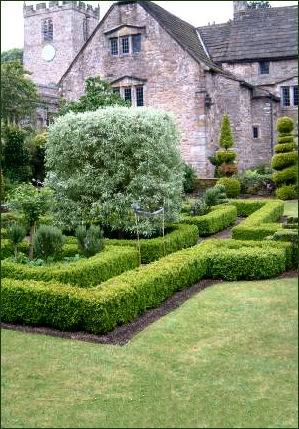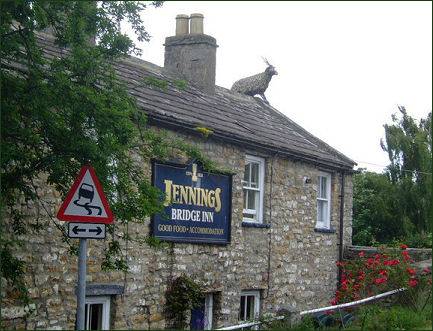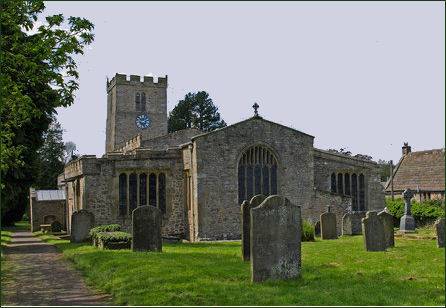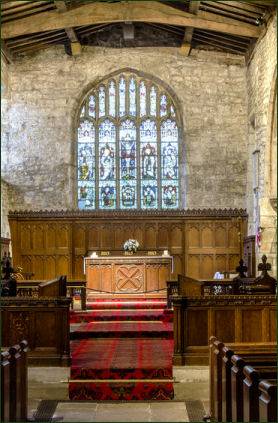Grinton
OS grid reference:- SE046983
 The small, picturesque village of Grinton, in Swaledale is situated near to Reeth and is located 11 miles to the west of Richmond on the B6270 road. The village lies on the south bank of the River Swale, reputedly the fastest flowing river in England.
It was at the first place above Richmond where the river could usually be forded.
The small, picturesque village of Grinton, in Swaledale is situated near to Reeth and is located 11 miles to the west of Richmond on the B6270 road. The village lies on the south bank of the River Swale, reputedly the fastest flowing river in England.
It was at the first place above Richmond where the river could usually be forded.
 Swaledale was referred to by Alfred Wainwright as his 'favourite dale'.
The Dale is famed for its stunning scenery with its stone walls, field barns, moorland, many footpaths for river and low and high level walking and its wild-life. The name Grinton means 'the green pasture' in Anglo-Saxon.
The first known written reference to the village occurs in the Domesday Book of 1086.
Swaledale was referred to by Alfred Wainwright as his 'favourite dale'.
The Dale is famed for its stunning scenery with its stone walls, field barns, moorland, many footpaths for river and low and high level walking and its wild-life. The name Grinton means 'the green pasture' in Anglo-Saxon.
The first known written reference to the village occurs in the Domesday Book of 1086.
Grinton's eighteenth-century stone houses and hotel cluster around the triangular village green. The stone bridge across the River Swale was widened in the eighteenth century.
Blackburn Hall, (pictured left) a Grade II listed manor house, stands between the churchyard and the river. The south wing is medieval and was used by the Augustinian monks of Bridlington Priory before the Reformation. The rest of Blackburn Hall has two date-stones carved EHB 1635. The Hall is named after Elizabeth Hutton Blackburn.
The village pub, the Bridge Inn (pictured right), a former Coaching Inn, which dates back to the fifteenth century, is popular with walkers and is a venue for weekly folk music sessions, normally held on Thursday evenings. The pub offers homemade food, well kept real ales, an extensive wine selection and comfortable en-suite accommodation.
Above the village, on the Leyburn road is YHA Grinton Lodge, a former shooting lodge which is now a youth hostel. Grinton Moor, spectacular when the heather is in bloom, is managed for grouse shooting. There are lots of public rights of way criss-crossing the moor. The ancient 'Corpse Way', may still be picked out running from Grinton to Keld, at the head of the Dale. During the Middle Ages the dead were brought in wicker biers to Grinton from all parts of the dale to be laid to rest at its large church. Maiden Castle is an enigmatic archaeological site lying high on the moor. It is probably prehistoric and may have had some sort of ritual use with its banked enclosure and walled entrance way.
St Andrew's Church, 'the Cathedral of the Dales'

 The village's most famous building is the beautiful and historic church of St Andrew, which is often referred to as 'The Cathedral of the Dales' due to the fact that it was the main church for the entire Upper Swaledale region during the Medieval era.
The village's most famous building is the beautiful and historic church of St Andrew, which is often referred to as 'The Cathedral of the Dales' due to the fact that it was the main church for the entire Upper Swaledale region during the Medieval era.
An earlier Saxon church may have once occupied the site, although this is not proven.
The church's font, which consists of a cylindrical bowl worked with diagonal lines is Norman. The arch tower survives from an older Norman church that once stood on the site. Some parts of the building date from the thirteenth and fourteenth centuries but much of the structure dates from the fifteenth century.
The pulpit is late Jacobean work and has a soundingboard dated 1718. In the east end of the north aisle is an old reading desk which holds a chained New Testament, and over the font is a carved tabernacle-work canopy dating to the late fifteenth century. In the floor of the Lady chapel is a slab to Elizabeth Blackburne dated 1688.
Due to its excellent acoustic properties, the church is often used as a venue for concerts during the Swaledale Festival.
Towns and Villages of Yorkshire
Abbeys and Churches of Yorkshire
